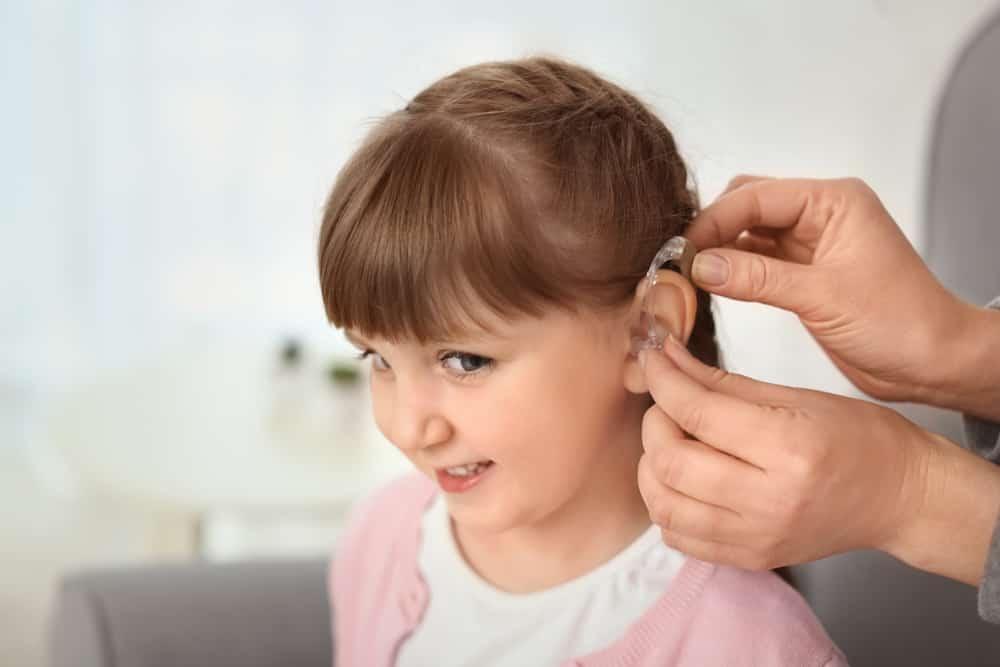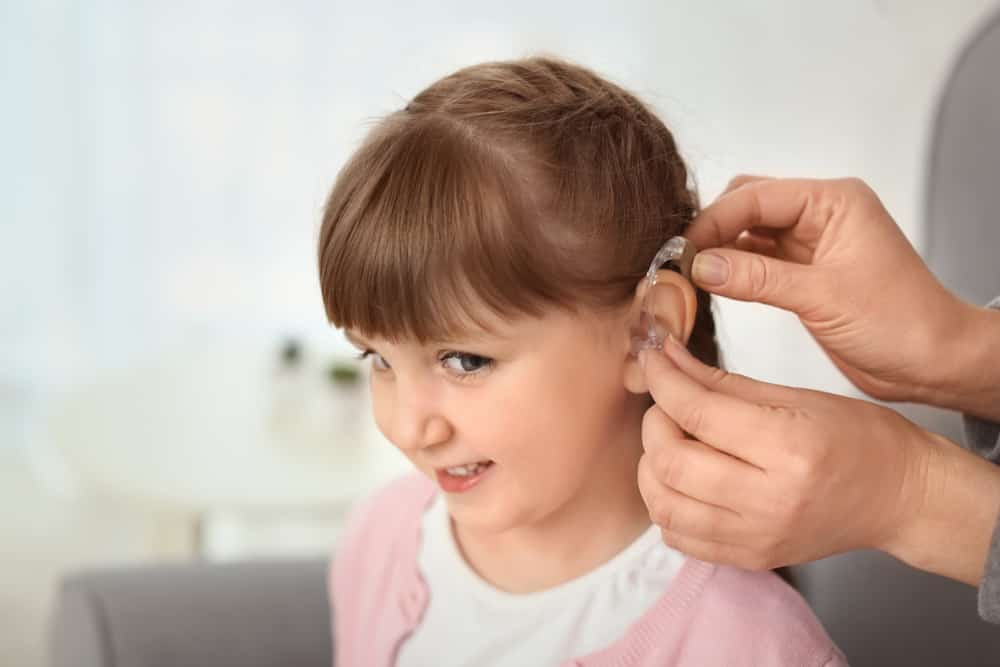Children Hearing Aids: Stigma, Childhood Diversity, and Barbie
May 20th, 2022 | 4 min. read


According to studies conducted by the Centers for Disease Control and Prevention (CDC), deafness or hearing loss affects approximately 3 out of 1,000 children, though some studies have shown it to affect up to 5 of 1,000 children. While hearing loss in itself can make life a bit more difficult, it affects more than just the ears. Hearing loss, whether mild or severe, makes language, speech, and social development more difficult, particularly in children.
What Is Childhood Hearing Loss?
Hearing is measured on a scale through pitch (Hertz) and volume (decibels dB). It is the result of a child being unable to process sounds below a certain level:
- Mild hearing loss: Unable to hear sounds below 25 to 40 dB
- Moderate hearing loss: Unable to hear sounds below 41 to 60 dB
- Severe hearing loss: Unable to hear sounds below 61 to 80 dB
Though it varies from mild, moderate, or severe, even the slightest form of hearing loss can make speech and language harder and leave children to feel different from their peers.
The cause of hearing loss differs for many children. The most common cause of hearing loss is attributed to autosomal hearing loss. This is caused by each parent carrying a recessive gene and passing it to their child, though neither parent experiences hearing loss themselves. Parents are often confused when their child is affected by this genetic form of hearing loss when neither parent is aware of the gene they carry.
Other causes of childhood hearing loss:
- Congenital genetic causes: Down syndrome, Usher syndrome, and Treacher Collins syndrome
- Congenital non-genetic causes: premature birth, birth complications, maternal diabetes, and drug use by the mother during pregnancy
- Non-congenital hearing loss: perforated eardrum, meningitis, frequent or untreated ear infections, second-hand smoke exposure
Signs And Symptoms Of Childhood Hearing Loss
Hearing loss can be difficult to detect in infants and small babies, but, it may be suspected if your baby is not startled by loud noises, does not turn in the direction of sounds after 6 months of age, or does not say a single word for one year. Toddlers and older children may experience a decline or delay in language skills, continually ask people to repeat what they said, or experience frequent ear infections.
If you suspect your baby or toddler is experiencing hearing difficulties, an audiologist can help to diagnose the degree of hearing loss, provide resources for early intervention speech therapy, and develop a treatment plan including the use of hearing aids and assistive devices.
Need to Schedule an Appointment For a Hearing Assessment?
How Do Pediatric Hearing Aids Differ From Adults?
It is no secret that children and toddlers are much more rough and tough than the average adult — so pediatric hearing aids must be stronger and more resilient. All hearing aids are equipped with a battery to power the device and a microphone, processor, and receiver to pick up sounds, analyze them, and deliver the amplified, distraction-free sounds to the inner ear. While all hearing aids are structurally the same, pediatric hearing aids differ in a few ways:
- Durability. Hearing aids and children are often not compatible, as hearing aids are fragile while children are tough. However, pediatric hearing aids are built to withstand the added stress.
- LED lighting. As an adult, it is easy to tell when your hearing aid is not working or the battery has died. However, small children may have difficulty communicating. Many pediatric hearing devices are equipped with LED lights, allowing parents, caregivers, and therapists to quickly assess the device to ensure it is working.
- Assistive device compatibility. People living with hearing loss benefit from many assistive devices to boost communication, learning, and social skills. Hearing aids for children are compatible with FM/DM microphones and other assistive devices to better help them in therapy and school.
In addition to the above-mentioned things, pediatric hearing aids are made of chemical-free materials and come in a variety of colors for your child to choose from.
Childhood Diversity Related To Hearing Aids
When thinking of how childhood diversity affects young children, we often think of cultural differences or differences in religious beliefs. However, special needs create diversities many are not willing to talk about. Hearing loss in children creates many challenges that must be overcome as they grow.
Children Feel Different From Their Peers
All children want to feel “normal” and be accepted into their group of friends at whatever necessary cost - even if this means they cannot truly hear what their friends are saying. Though hearing loss affects many children, hearing aids create a difference that can leave children with hearing loss feeling criticism and judgment.
Barbie Doll And Hearing Aids
A Barbie doll and hearing aids seem so small to “normal” people. However, Mattel’s commitment to continue creating dolls of all skin tones, disabilities, and body types brings awareness to childhood diversity in a new way.
Mattel has recently unveiled Barbie dolls that have behind-the-ear hearing aids. The new Barbie is another way kids with hearing loss can “see themselves” in the dolls.
The new hearing loss Barbie joins other Barbies with Vitiligo, Prosthetics, and no hair to reflect Mattel's continued commitment to childhood diversity.
How To Tell If Your Child Is Benefiting From Their Hearing Aids
Hearing aids may be recommended well before your child can communicate, so how do you know if the hearing aid is working appropriately or in the right settings? It is important to pay close attention to the behavioral cues that your child emits.
- Does your child react to loud noises in the room?
- Does your child turn their head towards you when you talk to them?
- Is your child soothed by calming sounds or songs?
If you answered no to any of the previous questions regarding your child with hearing aids, it might be time to see your child’s audiologist for adjustments.
Conclusion
Hearing loss can affect the day-to-day life of a person's suffering. At Houston Hearing Center, we understand the importance of being able to hear the world around us. Because of this, our team has been helping those in the Houston area hear better for more than 100 years. We work closely with the physicians at Houston Ear, Nose, and Throat clinic to provide each patient with an individualized treatment plan.
An audiology evaluation (or hearing test) can be beneficial for people of all ages from infancy into late adulthood. Testing includes an evaluation of how well you hear certain tones, frequencies, or pitches, as well as how you process speech. Millions of people around the world use hearing aids to enhance their quality of life.
Early intervention is crucial in helping your child receive the necessary help to learn to overcome the difficulties of hearing loss. If you suspect your child, someone you love, or yourself is experiencing difficulty hearing, no matter how severe, schedule an appointment for a hearing test today. We also offer hearing aid consultation and fitting for all ages.